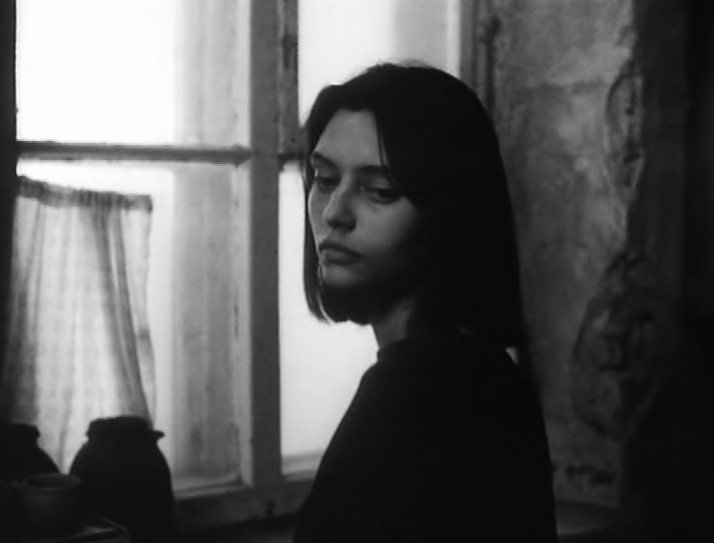French Impressionism
- “French impressionist cinema” also referred to as the first avant-garde or narrative avant-garde is a term applied to a group of French films and filmmakers working from 1918-1929. Film scholars have had difficulty in defining this movement or deciding whether it should be considered a movement at all. (Vince DI MEGLIO 2016, para. 1)
- The director of French impressionist cinema has more control on the timeline, the characters’ emotions, and their fantasy. (Vince DI MEGLIO 2016)

- Just like the picture present, French impressionist cinema prefers to using closer up and the single light to film a character and show her emotions. By this way, audiences can feel and share the same emotions as the character.
- The idea of French Impressionism is more like an art form, such as the poetry. It focuses on the aesthetic experience, both on the visual aspect and the emotional aspect. (cineCollage)
Categories:

- Photo-genie
- Louis Delluc uses the term ‘Photo-genie’ to describe the art capacity of cinemas, the film not only provides us the impressions of the short time, lasting beauty but also the spectacular of the daily life, nature, and details. (1917) Besides, he also mentioned that ‘photo-genie’ provides a chance for films to achieve the level of art. (1917)
- In the 1920s, Jean Epstein argued that “photo-genie was a moment, a flash of ecstasy within a film, caused by a perfect but unpredictable combination of elements.”
- Photo-genie pays attention to the ability of film to express, which is the way it constructs movement and time and also the views of both camera and audiences. Thus, the close-up shot is used often in photo-genie film.
- This way to film can make people have a new view of life, which they ignored before. This is because that it draws audiences attention to details.
- Moreover, because photo-genie is one kind of art, it is also subjective. It depends on viewers’ ideas.

- Poetic
- “Poetry film is a subgenre of film that fuses the use of spoken word poetry, visual images, and sound to create a stronger presentation and interpretation of the meaning being conveyed. ” – – – from Wikipedia
- A slow motion as the start may is a good choice to set up the main emotion of the film.
- Some recommendation of the Poetic film: <http://www.tasteofcinema.com/2015/20-great-poetic-films-that-are-worth-your-time/>

Directors:
- Jim Jarmusch
- Jean Epstein
Reference:
- Vince DI MEGLIO 2016, Film Movement – French Impressionism (1918-1929), LETTERBOXD, viewed 4 September 2018, <https://letterboxd.com/vince_dimeglio/list/film-movement-french-impressionism-1918-1929/>.
- cineCollage, French Impressionism: 1918-1929, cineCollage, viewed 4 September 2018, <http://cinecollage.net/french-impressionism.html>.
- UICinema 2017, Photo-genie, Youtube, IUCinema, Indiana, viewed 4 September 2018, <https://www.youtube.com/user/IUCinema/about>.
German Expressionist Film

-
As German film becoming stranger and darker, their filmmakers would like to disorient audience and immerse them in the main characters’ head. (CrashCourse 2017)
-
Before the war, German films fell firmly within our idea of a “cinema of attractions”, designed for entertainment. (CrashCourse 2017)
-
To achieve a more sophisticated film, they get inspired by the French ‘film d’art’ movement. Filmmakers start to pay attention to the craft of narrative filmmaking, focus on a specific character with his complex experiences. They called this kind of film Autorenfilm. (CrashCourse 2017)

-
Cabinet of Dr. Caligari, the small studio changed the face of cinema. Caligari prefers to use mise-en-scène expressionistically, rather than realistically (CrashCourse 2017)
-
The main idea of German Expressionism: using an exaggerated, distorted mise-en-scène to reflect the inner psychology of the characters. In other words, Visualize the character’s mind and emotions. (CrashCourse 2017)
-
It is also the world’s first taste of highly subjective filmmaking as well – putting us in the mind of an insane main character and making us experience the world as he does. (CrashCourse 2017)
-
Main method: given its anti-authoritarian themes, exaggerated rise-en-scène, subjective point of view and the twist ending. (CrashCourse 2017)

-
Director: Fritz Lang, start architect and use elements of it in his film. His films depict grand, epic spaces and he pays attention to the details and structure of his narratives. (CrashCourse 2017)
-
Director: F.W. Murnau, focus on camera movement to show the inner of characters (CrashCourse 2017)
- In conclusion, the German expressionism is more focus on the inner mind and emotions of the character. Filmmakers present their ideas by giving audiences a ‘tour’ through the character’s complex experiences and stories. The main idea regards the art of expression rather than the showing the image of reality.
Reference:
CrashCourse 2017, German Expressionism: Crash Course Film History #7, Youtube, CrashCourse, U.S, viewed 28 August 2018, <https://www.youtube.com/watch?v=K6XDyth0qxc>.
OpenCulture 2017, What Is German Expressionism? A Crash Course on the Cinematic Tradition That Gave Us Metropolis, Nosferatu & More, OpenCulture, viewed 28 August 2018, <http://www.openculture.com/2017/06/what-is-german-expressionism.html>.